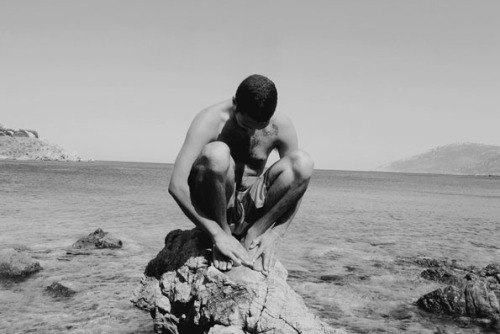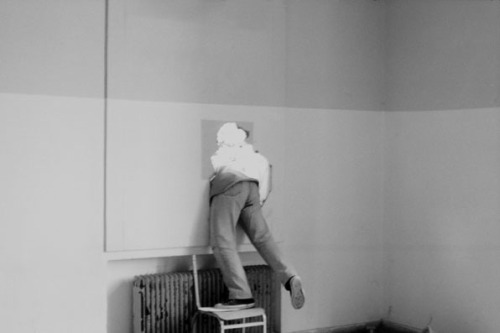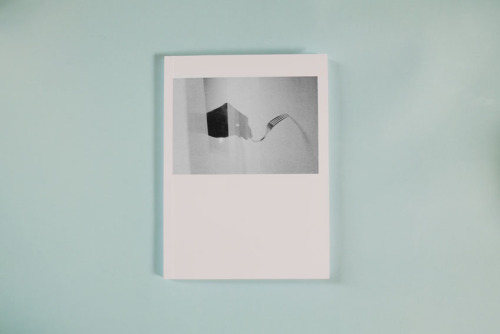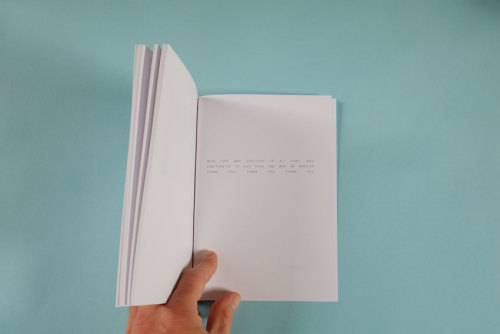
© Alexis Vasilikos, ‘All in’
Since you have no statement on your website, please tell us a bit about yourself and which directions is your work taking you the last couple of years?
Alexis Vasilikos (AV): Hello my name is Alexis Vasilikos and I like to play with images, I work mostly with photography and I’ve been doing it for the last 20 years. My work explores my day to day life and it is based on spontaneity and improvisation. What I like to do the last couple of years is to mix all sorts of imagery and make a form of editing which looks like the Greek salad. I don’t try nor am I interested in telling any story through my images, I’m more interested in experiencing what is present when there is no story in the mind, when the consciousness is empty of content, and in this sense I see my practice as a form of meditation.
Although there are storylines behind some of my series, generally speaking my attitude is: «Forget about the story and let the mind merge in the seeing». Why burden oneself with thinking, when you can just see?

© Alexis Vasilikos, ‘Yoga’
How much are editing and randomness an engine of the process of defining your photography?
AV: Editing is the final piece, the composition. So lately I tend to see as “works” the edits rather than the single images, and because I don’t see images as something fixed, I continuously edit the same material over and over again , in this way the images are always fresh. Before I used to play with large quantities of images and so the edits I was doing had 120-180 images, now I ’m doing edits that contain up to 36-37 images which is the number of the 135 mm film, I thought that putting a limit would be interesting.
I call the way I edit “energetic editing” because the energy of the image is the main element around which the images unfold and become a flow. What I do basically is to decontextualize the images completely and then create a new context which is based on the inner dynamic of the images themselves and their interaction. So yes definitely editing is very important, it is at the core of my practice. "Randomness" is not a concept that I feel particularly close to, I tend to see all forms as expressions of one single principle, and randomness implies that there are at least two kinds of causes.

© Alexis Vasilikos, ‘Back to Nothing ( India 2004 -2015 )’
From the titles of your works (‘Yoga’, ‘Back to Nothing’, ‘Intersections’, ‘Behind the Veil of Time’, ‘Google Pairs’…) or even the content itself or the use of black &white and color, there is always this recurrent feeling and reference to 2 different worlds or two dimensions of time, the now & the beyond… as if every photograph is a link or a conversation with both. How do you approach this notion of duality and can you speak more specifically about your latest series ‘Google Pairs’?
AV: I don’t know about 2 different worlds or two dimensions of time, that would be like “stepping” into the pictures and speak from there, as if they had a fixed meaning and that is something I’d prefer not to do. There are people who are very good at speaking about images but I don’t like to interpret images or attribute meaning to them, if I’ve learned one thing from photography, this is the flimsy nature of phenomena, and photographs are highly flimsy phenomena.
If photographs are conversing with something it’s with impermanence, maybe this is why I continuously edit the same images, I want to keep them in touch with the ever-changing, I don’t want to let them grow roots in the mind, it feels much more alive this way than to say: this is about this or that, which is just a construct anyway.

© Alexis Vasilikos, ‘All in’
No! I’d rather say : I don’t know what it is about , it’s just how it appears in this moment , let’s see how it will unfold…
Rumi puts it beautifully when he says:
«Do you think I know what I’m doing?
That for one breath or half-breath I belong to myself?
As much as a pen knows what it’s writing,
Or the ball can guess where it’s going next.»

© Alexis Vasilikos, ‘All in’
Duality is the mother illusion, on one hand everything we perceive and experience is based on duality and on the other hand when it becomes psychological and it takes the form a “me”, we suffer from it. And so we are called to transcend it, and this is where the journey of Yoga (union) begins, all of life takes place in the cooking pot of Yoga. It’s a kind of divine hoax, because it doesn’t really exist and yet it’s very rare to meet a human being who is completely out of it, or more precisely who has realized that one is never in it. At a more direct level one can ask: Where is duality beyond the realm of thought? And what about the awareness of duality, is it part or apart from duality?

© Alexis Vasilikos, ‘Google Pairs’
In “Google Pairs” I observe the results of my name on the google images search engine over a period of two years, and I keep note in the form of diptychs. I don’t know if this work has to do with duality, it’s very fresh to speak about it. Obviously when you have 2 images next to each other there is a duet. While I was doing it, I was thinking about the collective editing that takes place in the internet and the nature of the “I” as a product of this collective editing.
Tell us about your last exhibition ‘Myths & Rifts’, in London, and how your work came to be associated with a more political content and what Greece is going through the last few years? How you define “political” in your work and how do you view what is called Crisis?
AV: I was invited to this show by the people of the KK OUTLET Gallery in London and my work was placed in this exhibition as the opposite side of the crisis, the other shore. On one side was the work of Stefanos Andreadis which was directly associated with the crisis and on the other hand they had my work which was placed as that which is not affected by the crisis, the magical side of existence. They made this show as a form of dialogue between these two aspects of life. Political in my work is …, I don’t know! Crisis is the ego, as long as we are under its influence we suffer, therefore we are in crisis.

At a social level it may seem more complex because we are talking about the collective ego, but the bottom line is the same, each and every one of us at some point is pushed from within to go beyond this ego - mind and its limitations. The good news here is the testimony of the Sage which clearly states that the ego is only an idea, devoid of any reality, therefore from this point of view the crisis is a stage of a greater possibility we have and not a finality.
Since you are also an editor, tell us more about the adventure of Phases magazine. What do you think about contemporary photography?
AV: Phases Mag started quite spontaneously as a meeting between myself and Jerome Montagne and it grows in a rather organic way, it is a form of dialogue around beauty in fine art photography. After 3 years of online presence we are almost ready to move to the print world.
About the contemporary photography, well if it’s good it’s not just contemporary, in general my view on art is a bit classical. I see beauty as an expression of the timeless and art as a fundamental mirror on top of which the timeless is reflected.
Lately I appreciate more and more the masters, maybe it’s a sign I’m getting a bit old. Edward Steichen, Saul Leiter, Andre Kertesz, Luigi Ghirri these are just a few whose work I enjoy deeply, of course there are many more, as for the contemporary ones, have a look at Phasesmag it’s full of beautiful contemporary photography. Also something worth exploring is the Greek contemporary fine art photography scene, I have a feeling that it’s quite rich and not very much known, if you consider the fact that there is no real market for fine art photography in Greece it becomes even more interesting what is happening here.
What about your new book, the series ‘All in’ and why did you choose to self-publish it?
AV: ‘All in’ is an extension of the dialogue we have with Jerome on Phasesmag, only in this case it took the form of a book and the focus was on my work, this is the first from a series of books we are planning to publish as “Phases Editions”. It’s a freestyle edit of 36 images in an edition of 100 with a very minimalist design made by Jerome. You can see the entire edit here. We chose to self-publish it because self-publishing gave us complete freedom to make it the way we wanted.



© Alexis Vasilikos, images of the book ‘All in’
What are your future projects, travels, explorations, collaboration…?
AV: I don’t like to plan so much, to just be is enough, the rest comes on its own!
---
LINKS
Alexis Vasilikos
Greece
share this page